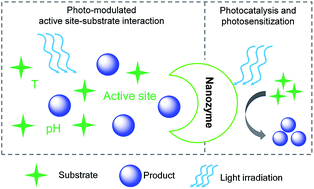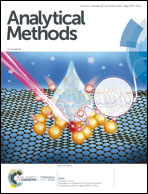Photo-modulated nanozymes for biosensing and biomedical applications
Abstract
Nanozymes refer to functional nanomaterials with enzyme-like catalytic activity. Compared with natural enzymes, nanozymes exhibit the advantages of low price, high stability, and large-scale preparation. The unique physical and chemical properties as well as the intriguing surface engineering of nanomaterials provide new avenues for the activity and selectivity regulation of nanozymes. Among the existing approaches for nanozyme modulation, photo-regulation offers the obvious advantages of the switch control of enzyme activity with real-time accuracy. Besides, the special features of light, such as noninvasiveness, high spatial and temporal resolution, and ease in controlling the intensity and wavelength, also hold promise for nanozyme modulation. In this review, the current status of photo-modulation for nanozyme activity regulation was briefly summarized. On the one hand, photo-irradiation can influence the nanozyme–substrate interactions in some cases, such as light-induced block/release of enzyme active sites and pH and temperature changes. On the other hand, some nanozymes cannot work without light, which are called light-driven nanozymes. Furthermore, the use of photo-modulated nanozymes for advanced biosensing and biomedical applications is also highlighted.



 Please wait while we load your content...
Please wait while we load your content...